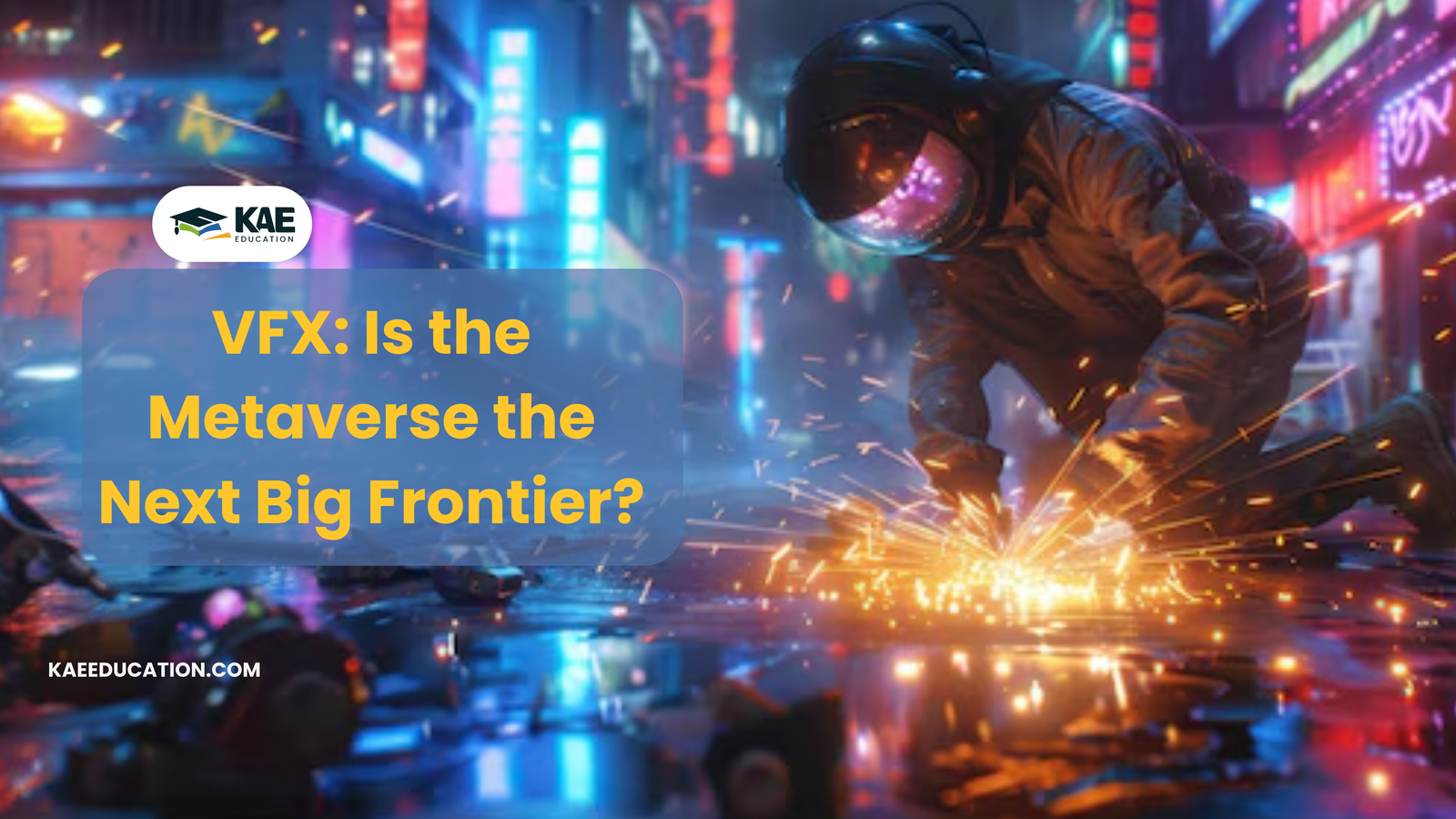VFX: Is the Metaverse the Next Big Frontier?
The Metaverse is rapidly becoming one of the most talked-about technological revolutions, with immersive virtual worlds set to redefine entertainment, Business, and Social interactions. As these virtual environments continue to expand, the role of VFX (visual effects) in creating lifelike, dynamic, and interactive spaces is becoming increasingly essential. But the question remains: Is the Metaverse the next frontier for VFX? Let’s explore how VFX will shape and elevate the Metaverse experience.
What is the Metaverse?
The Metaverse refers to a collective virtual shared space that combines physical and digital realities, offering users immersive experiences through augmented reality (AR), Virtual Reality (VR), and mixed reality (MR). It enables real-time interaction among users and computer-generated environments, making Virtual effects an integral tool for creating visually stunning and interactive spaces.
The Role of Virtual effects in the Metaverse
(1) Creating Immersive Environments
One of the main features of the Metaverse is its immersive nature, where users can interact with 3D spaces and objects. Virtual effects plays a vital role in making these environments feel real and dynamic. By using advanced visual effects, creators can craft realistic textures, lighting, and weather patterns that respond to user interaction.
(i) Virtual landscapes, cities, and ecosystems are brought to life using Virtual effects to simulate realistic elements.
(ii) VFX helps create surreal, fantastical worlds where the laws of physics and nature can be bent.
(2) Enhancing Real-Time Interactivity
The Metaverse thrives on real-time interaction, where users can modify their environment, create digital assets, and explore virtual spaces. Virtual effects is essential in enhancing these interactions, enabling real-time rendering and visual effects that adapt to user actions and decisions.
(i) VFX can simulate reactions such as changes in lighting, particle effects, and visual transformations in real time, making each experience unique.
(ii) The ability to instantly render changes ensures that users feel as if they are truly interacting with the environment.
(3) Elevating Avatars and Characters
In the Metaverse, avatars represent users, and the design of these avatars will be powered by VFX. From hyper-realistic avatars to stylized cartoonish ones, Virtual effects can enhance the visual appeal of characters, ensuring they respond to changes in expression, movement, and even environment.
(i) Facial expressions, body movements, and emotional reactions are improved with advanced VFX, helping avatars appear more lifelike and relatable.
(ii) Real-time hair, clothing, and accessory effects allow users to personalize their avatars fully.

Benefits of VFX in the Metaverse
(1) Unmatched Creativity
(i) Virtual effects in the Metaverse opens up endless creative possibilities. Artists and developers can create anything from photorealistic environments to abstract digital art, all of which can exist simultaneously in a shared virtual space.
(2) Increased User Engagement
(i) By enhancing the visual experience with powerful VFX, users are more likely to engage and spend time within the Metaverse. Stunning visuals help captivate users and keep them immersed for longer periods.
(3) Real-Time User Customization
Real-time Virtual effects allows users to instantly modify and personalize their environments, avatars, and assets, giving them unprecedented control over their virtual experiences.
Challenges for VFX in the Metaverse
(1) High Computational Demand
(i) The Metaverse requires real-time rendering of complex visual effects, demanding powerful hardware and efficient optimization techniques. The need for high-performance computing can be a barrier to widespread adoption.
(2) Balancing Quality and Speed
(i) Achieving high-quality VFX in real-time is challenging. Developers must balance the need for realistic visuals with the requirement for fast rendering times to ensure smooth user experiences.
(3) Technical Limitations
While technology is advancing, there are still limitations in rendering highly detailed and dynamic VFX in large-scale, multiplayer virtual environments without sacrificing performance.
Conclusion: The Future of VFX in the Metaverse
As the Metaverse continues to evolve, VFX will remain at the core of its development, shaping the way users interact with virtual worlds. From creating lifelike avatars to enhancing the realism of virtual environments, Virtual effects will push the boundaries of what’s possible in the digital realm. As technology advances and the demand for virtual experiences grows, the Metaverse will undoubtedly become a dynamic space where Virtual effects plays a pivotal role in defining the future of entertainment, business, and social interaction.
FAQs About VFX in the Metaverse
VFX in the Metaverse enhances user experiences by creating visually immersive environments, real-time interactions, and lifelike avatars. It helps craft the virtual worlds that users explore and interact with.
Stunning visuals powered by VFX keep users engaged by providing dynamic, lifelike environments and responsive avatars, making the virtual space more enjoyable and interactive.
Yes, VFX is used to design virtual storefronts, event spaces, and branded environments, offering a visually appealing way for businesses to engage with users.
Virtual effects can improve avatars by adding detailed facial expressions, hair and clothing animations, and realistic interactions with their surroundings, making avatars feel more lifelike.
Yes, real-time rendering is crucial for interactive environments where users make immediate changes, allowing for dynamic visual responses and interactions with the virtual space.
VFX creators design and implement visual effects for virtual environments, avatars, and interactions, using tools like Unreal Engine or Unity to craft immersive, interactive experiences.
While Virtual effects will play a major role in shaping the Metaverse, it will be part of a broader technological ecosystem involving VR, AR, blockchain, and AI, working together to create a fully immersive experience.

